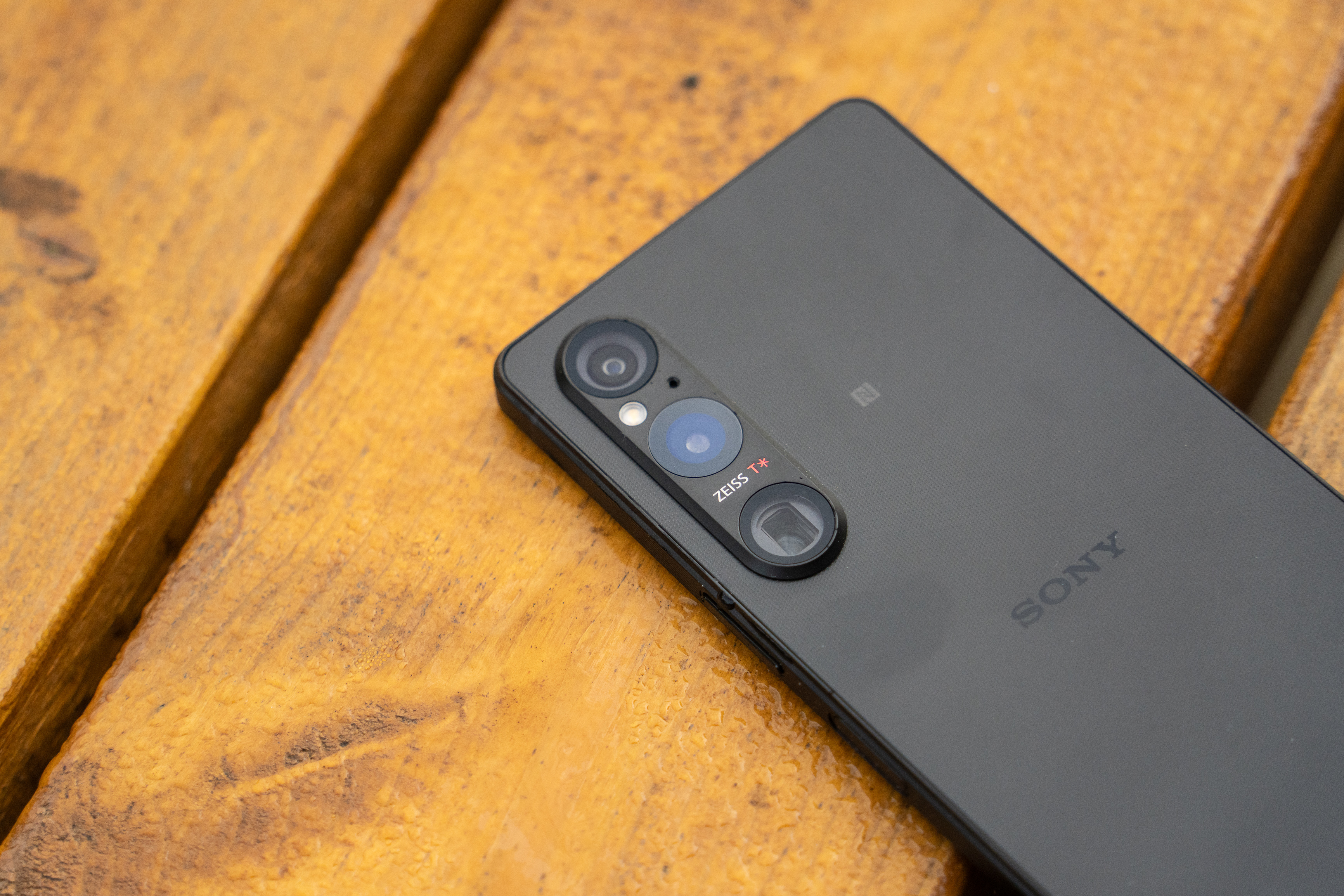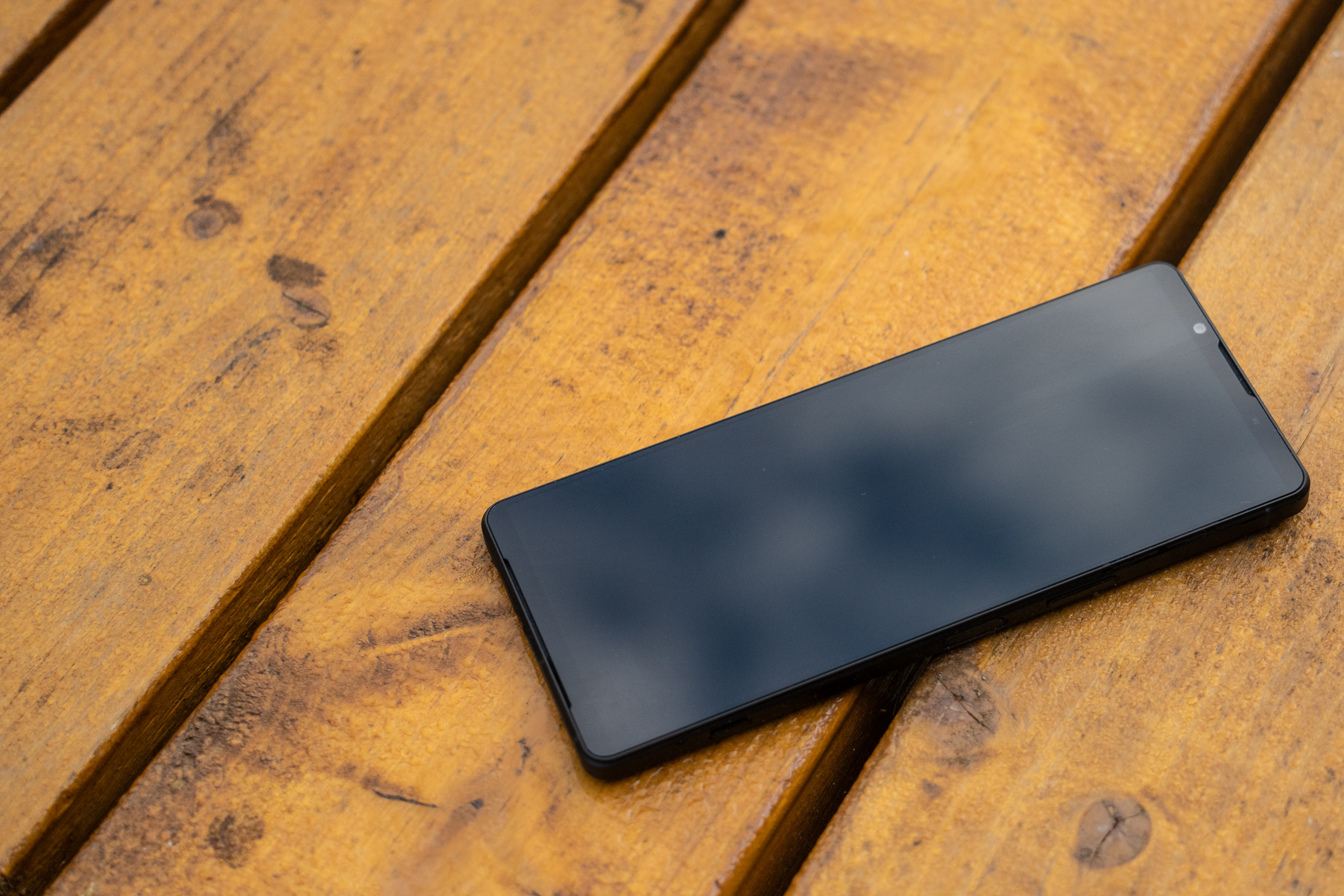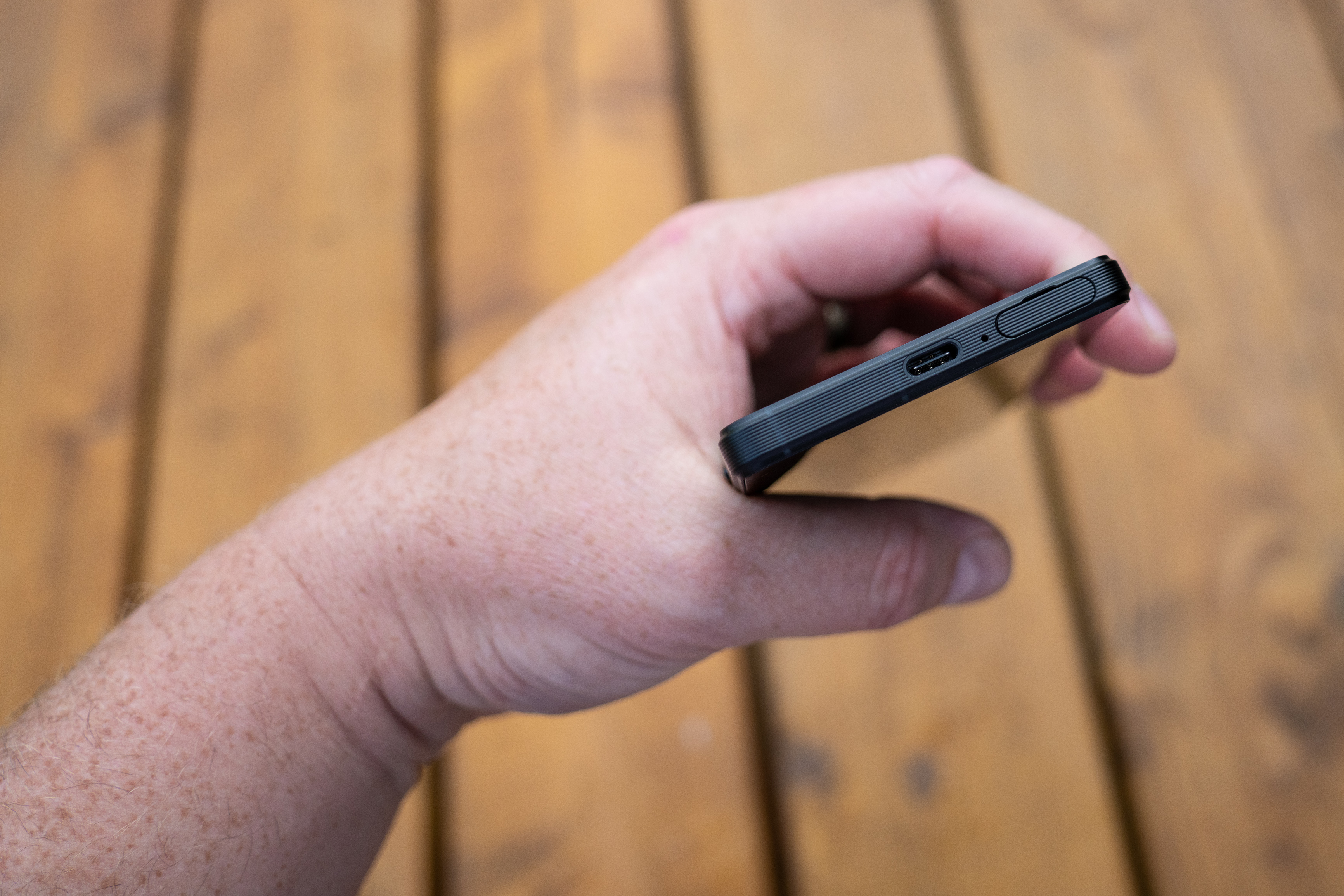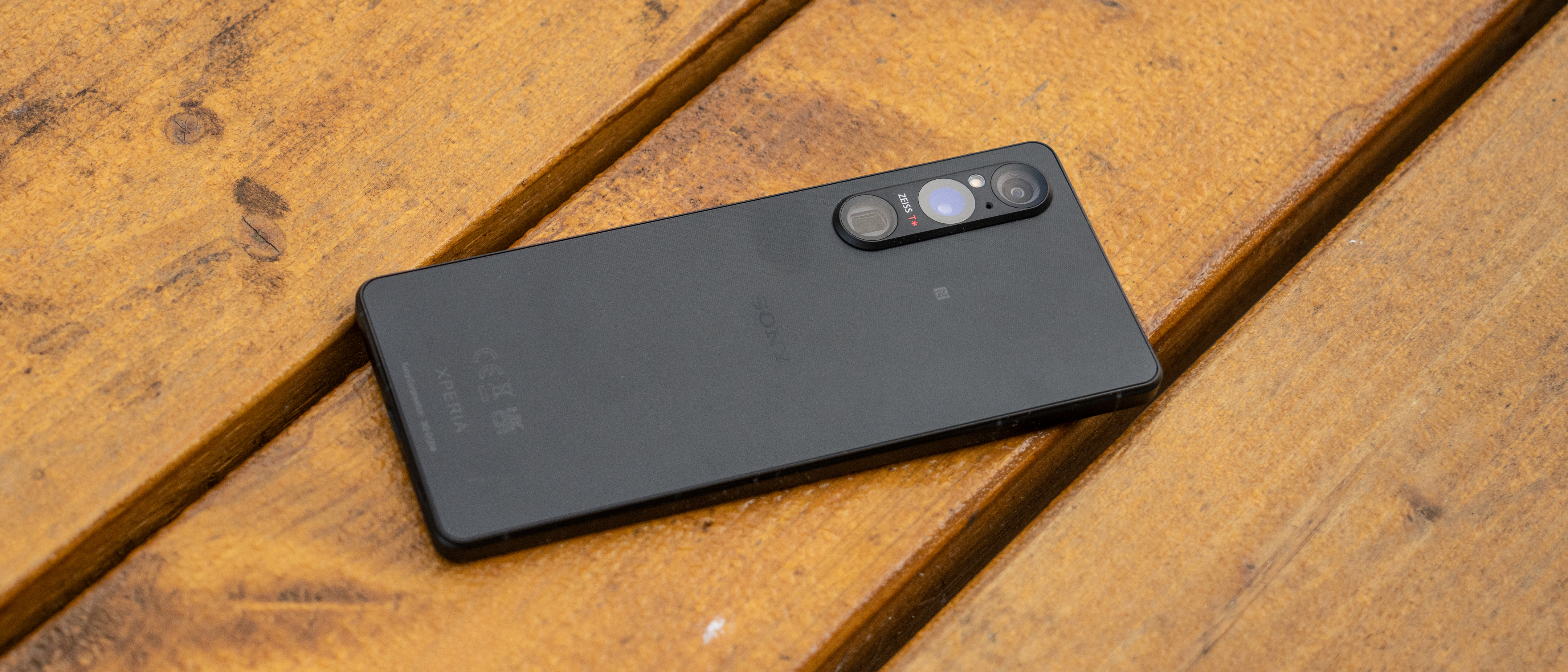
You can always tell a Sony phone, and the Sony Xperia 1 V is no different in that respect. They’re taller and thinner than other handsets with the same sized screens, and have in recent iterations sported a textured back that offers more grip than the equivalent shiny glass. They also all look the same, with the Xperia 1 - the top of Sony’s range - being almost indistinguishable from the Xperias 5 and 10 except for differences in port and camera positioning that are discernable to experts. Part of owning a flagship smartphone is for other people to know you’ve got one, to ask you about it and allow you to show off, and a phone that blends in with those further down the scale may have an issue with this.
The Xperia 1 V deserves its place at the top of the best camera phone hierarchy, however, with some powerful internals, a high-res screen, and excellent cameras that set it apart from other Xperia models. There's also the price tag, which is a little higher than that of the Samsung Galaxy S23 Ultra and just slides under that of the iPhone 14 Pro Max - both with the same amount of storage but featuring larger screens.

Sony Xperia 1 V review: Key specs
Design and screen

This fifth generation of the Xperia 1 looks very, very similar to the preceding one. Apart from the movement of the LED flash on the camera cartouche, they’re almost identical devices. Ours is black and is extremely shiny from the front, where the Gorilla Glass screen lives, while the ridged and roughened sides and rear have a matt appearance.
The whole thing is made of glass, but perhaps because we’re used to the idea of glass being shiny, the textured back gives the impression of being made of plastic. This is a shame, as it takes the edge off its premium impression - though you’re likely to put it in a case anyway - who wants to swing something that costs over £1,200 around unprotected? It also still manages to pick up finger marks from the sweaty, greasy mitts of enthusiastic handlers, a problem smartphones will apparently never be free from.
You can get it wet, however. The actual IP rating is a bit vague, with IP65 and IP68 both appearing on Sony’s site. This means it’ll definitely keep dust out, and the waterproofing sounds good too, as the phones are tested by being ‘gently’ placed in 1.5m of tap water for 30 minutes. There's nothing on Sony’s spec list that says the phones actually survived this testing, and it also warns you not to put the device completely underwater, but then electronics and water have always been a volatile mix.
The screen has a high resolution, almost but not quite 4K, and a correspondingly high pixel density. There's no danger of being able to identify individual pixels here, and the density of over 600 per inch puts it ahead of its rivals from Apple and Samsung. It has a 120Hz maximum refresh rate, and displays 100% of the DCI P3 colour gamut, just like the best monitors for video editing.
Button placement is standard for an Android phone, with a volume rocker and slightly recessed power switch, which contains the fingerprint reader, on the right-hand side of the phone as you look at it, and near the top. Below is a rarity, a camera shutter release button - more on that later - and the increasingly scarce 3.5mm headphone socket lives at the top, while the USB-C port and SIM/Micro SD tray are at the bottom.
Cameras

Sony has upgraded the sensors in the Xperia 1’s cameras since the last generation. The main camera is now built around a 48MP 1/1.35" Exmor T for mobile sensor and a tiny f/1.9 Zeiss lens with an equivalent focal length of 24mm.
Images from this camera, binned down to 12MP as is the fashion at the moment, are absolutely excellent as long as you’re able to give it enough light. It is still a phone camera, after all. As the brightness drops, image quality dips a bit, and while this is the first time Sony has incorporated Android’s night mode into its app it can’t do the impossible.
Ah yes, the camera app. Most of the time, when you open a smartphone camera, you get a fully automated experience with a white circular shutter button on the screen. And you can get that here too, as long as you stay in Basic mode. At the top of the screen is a virtual dial that switches modes like the PASM dial on a DSLR or mirrorless camera. Entering any of the other modes means using the shutter button on the outside of the phone’s casing, and allows you to alter settings just as if you were in aperture priority, manual or other common modes. Even the autofocus points light up in green squares as they do on a Sony Alpha camera, and you can shoot raw files.
It's all nice to have, but becomes a little complicated as you don’t have the exterior dials you’d usually find on a mirrorless. The 1 V is full of Sony’s Pro apps that you need to sit down and learn before you can use in anger, and it’s even positioned as being useful for serious film-making through features such as the S-Cinetone picture profile (which you’ll also find on Sony cameras like the Alpha 1, A7S III and FX3) that’s meant to recreate the look of a Sony Venice camera. It offers less dynamic range than S-Log 3, but balances it with noise better in the footage, which doesn’t need to be colour graded. So they say. You can record video in 4K up to 120fps in Video Pro, as well as in HLG HDR, which looks great on the high-res OLED screen.
The main camera isn’t the only one, of course - this is a flagship phone in 2023 so it has three. There are 12MP ultrawide and tele cameras, the latter sporting a zoom lens that can manage up to 5.2x magnification at the cost of a little aperture, and another one at the front. Neither of these sensors produces the crisp colours of the main camera, though.
Performance

The Snapdragon chipset in the Xperia 1V is the best currently available, and while it comes out slightly behind the iPhone 14 Pro in the benchmarks, it’s no slouch either. In Geekbench’s single- and multi-core tests it bests the Samsung Galaxy S23 Ultra and the OnePlus 11, two more Snapdragon 8 Gen 2 phones, which makes it one of the most powerful smartphones available right now.
There's certainly no feeling of sluggishness when you use it. An app like Video Pro, which as a complicated piece of software you might expect to sputter into life like an old diesel engine, is on-screen in a split-second, while in Mighty Doom the loading bar zips across the screen and the game itself is as smooth as you’re going to get. It’s a very impressive phone to use, but then it should be, considering the price.
There's a 5,000mAh battery inside the Xperia 1 V, which can be topped up with 30W fast charging, as well as wireless charging. The fast charging is a bit on the slow side compared to the 45W you’ll get with the Galaxy S23 Ultra, but it still beats Apple’s offering. You don’t get a charger in the box with the Xperia, though.
The battery life of just over 15 hours in our testing is exceptionally good, just beating the Galaxy S23 Ultra. The benchmark test simulates constant use, so If you believe eMarketer’s figures that adults spend three hours and 43 minutes a day using their phones, you can see how that translates into as much as three days between charges if you factor in standby time.
Price
There's no getting past the price. This is one expensive phone, and it could be argued that it doesn’t do anything a much cheaper model can’t. It definitely does it faster, and more smoothly though - the amount of processing power contained within its svelte body testament to that - and the screen is lovely to look at.
For the price of this phone you could get six Nokia G42 5G handsets, or a Google Pixel 7a and a Google Pixel Tablet.
Should I buy the Sony Xperia 1 V?

The Xperia 1 V is a tricky phone to recommend, not because it isn’t excellent - it is - but because of the company it keeps. You’ll need to want this phone over the iPhone 14 and the Samsung Galaxy S23, phones that come with an equal share of prestige and performance, with powerful chips and sharp, colourful screens of their own, and we’re not sure it does enough to rise above such competition and justify the extra premium price.







